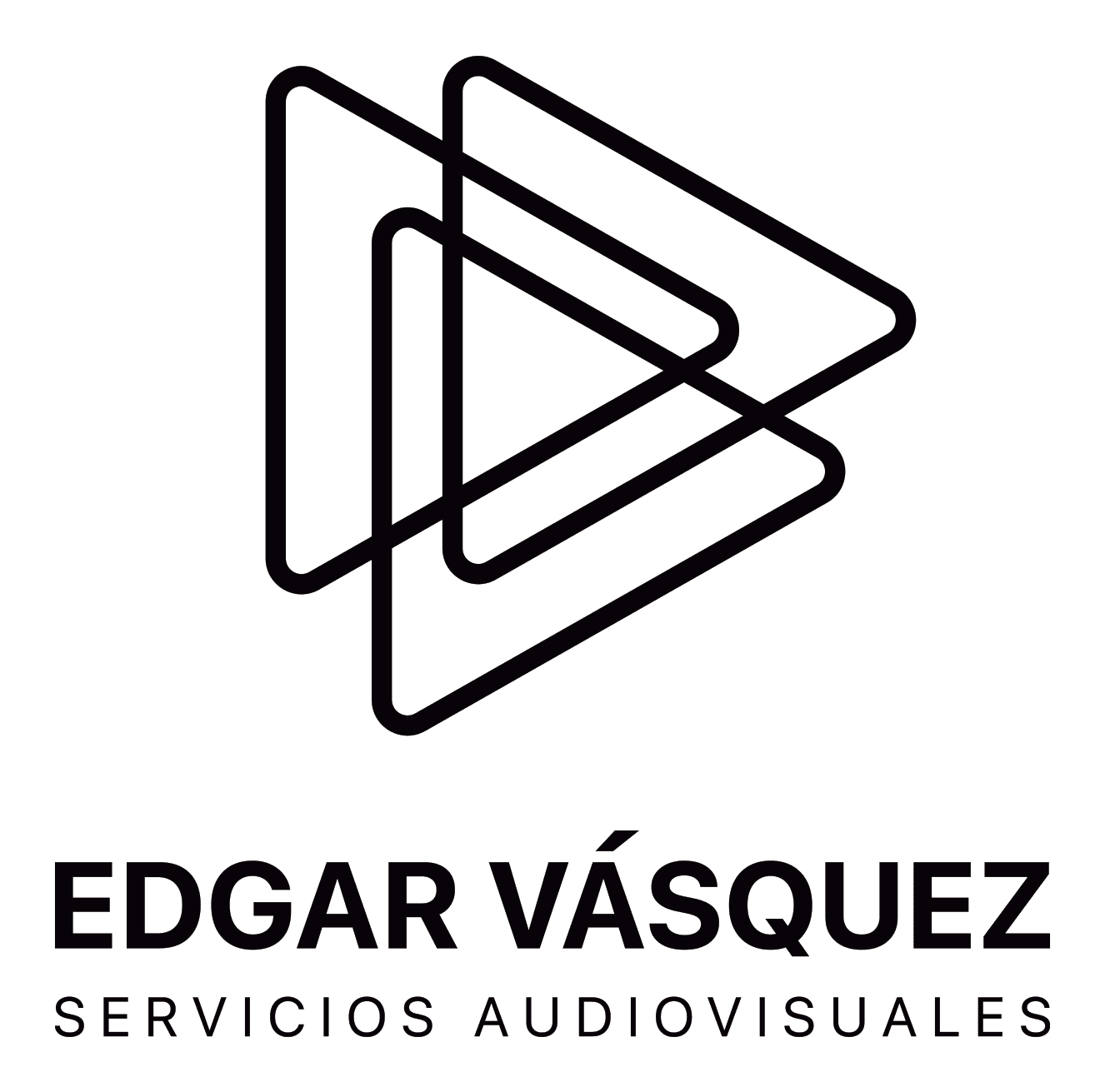Home > Blog > Professional Sound > What is the stage plot in technical rider? Apps and examples
What is the stage plot in technical rider? Apps and examples
- Edgar Vásquez
- February 25, 2024
- 14 Min of Reading
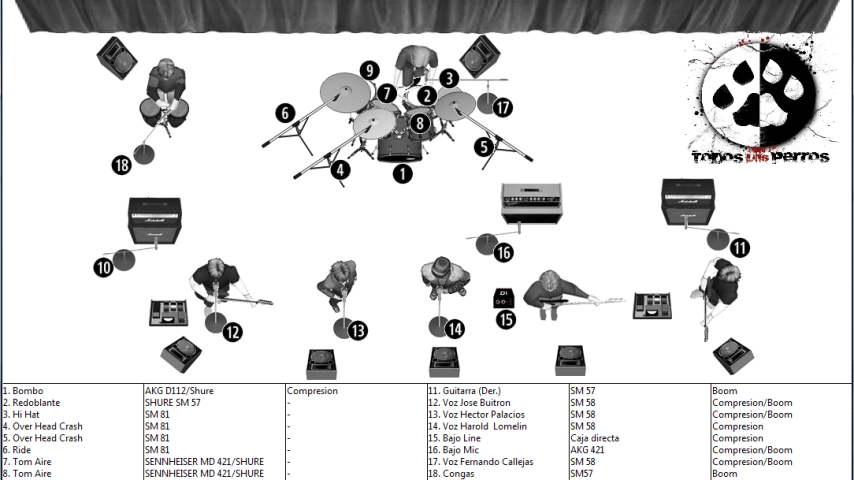
It is possible that if you know the meaning of a technical rider you may think it is the same as a stage plot, but it is not. Although the two terms are closely related, they are two different things.
In this article we are going to talk about what is the stage plot in the technical rider, what is it for, who participates in its creation, the different types of stage plots that can exist in the production of an event, the best websites and applications to create a professional stage plot, some examples of setups and the importance of this tool in any band or solo artist. All this under the expert guidance of Edgar Vásquez Audiovisual Services.
Ensure the success of your event with the best sound company in Barcelona. Contract our services today!
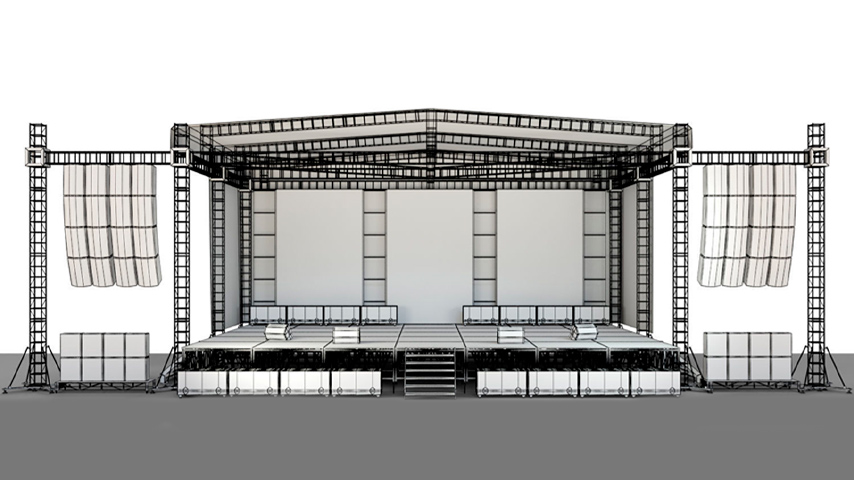
What is the stage plot and what is it for?
The stage plot is a diagram showing the position of instruments, microphones, monitors, and other equipment on the stage. It serves as a visual guide for the technicians and that each instrument or sound equipment is located in the right place.
Stage plot in Spanish means “stage plan” or ” stage plan” and beyond being recommended, it is essential for all types of musicians who perform live, from the most novice to the most experienced.
Nowadays, stage plots are made in 3D, although there are still bands, especially the more amateur ones, that still use two-dimensional stage plans with a zenithal view.
Who should create the stage plot?
The responsibility for creating a stage plot generally rests with the artist or band, often with the help of their technicians or manager. It is crucial that it accurately reflects the necessary setup, facilitating the work of the technical teams of the venues.
Types of stage plot
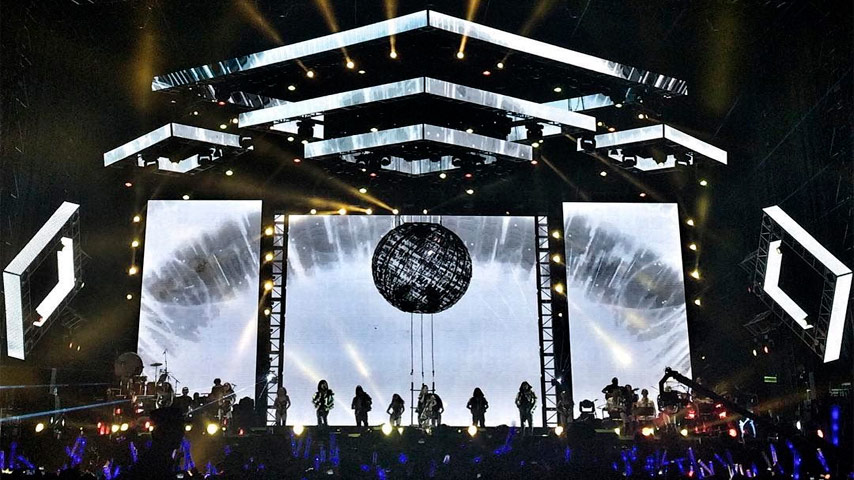
In contrast to smaller-scale events, where artists must adapt to the pre-established infrastructure, in large-scale productions, such as custom tours of musicians or bands, is the professional sound and lighting company for concerts who must adjust their offer to the specific demands of the artist.
To handle the technical complexity of large tours or events, a single stage plot detailing the arrangement of instruments is not enough. It requires the creation of specific stage plots for each technical aspect, ranging from sound and lighting equipment to screens. In the following, we will go deeper into each of these elements.
1. Sound stage plot
The sound stage plot is essential for any live performance, as it details all the audio needs of the presentation. This diagram should include the precise location of each instrument on stage, as well as the position of microphones, whether for vocals, acoustic instruments or amplifiers. In addition, it should specify the requirements for stage monitors or in-ear monitors, making it easier for sound engineers to configure the PA (Public Address) system accordingly.
2. Stage plot of illumination
A lighting stage plot describes how the lighting andvisual effects should be arranged to complement the performance. This blueprint helps lighting designers understand the desired atmosphere and how to properly light the performers and the stage. You should note the positions of key lights, fill lights, back lights, as well as any special effects such as smoke machines or pyrotechnics.
3. Stage plot of screens
In events that incorporate visual elements through screens or projectors, a stage plot of screens is critical. This scheme should indicate where the screens will be placed, their size and the necessary orientation so that the public has the best possible view. In addition, it should detail the connections required to send the content to the screens, whether from computers, live cameras or any other means.
Each type of stage plot plays an indispensable role in the planning and execution of a live event. By providing clear and detailed information on sound, lighting and visual needs, artists can ensure a seamless performance and an unforgettable experience for the audience.
Discover Our Event Sound Service
From inspiring conferences to unforgettable shows, we sound every moment with exceptional quality, making your event stand out!
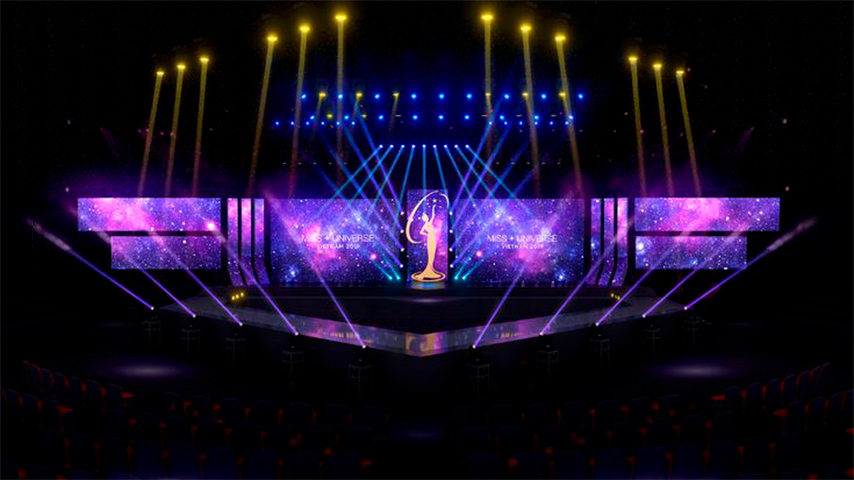
How is a professional stage plot made?
The creation of a professional stage plot is a fundamental step in the planning of any music or live entertainment event. The following are the key steps and considerations for developing a high quality stage plot.
- Identification of Key Elements: List all elements to be used on stage, such as musical instruments, sound equipment, lighting and visual elements.
- Selection of Specialized Software: Choose specific design tools to create professional stage plots (as some of them will be named below).
- Stage Plot Design: Locate each element on the stage accurately, adding technical details and ensuring the clarity and legibility of the diagram.
- Review and Feedback: Consult with all event participants to make adjustments based on their needs and constraints.
- Distribution and Use: Share the finalized stage plot with the technical team, organizers and any other interested parties, ensuring that everyone has access to the latest version.
By following these steps, you can ensure effective communication and optimal stage setup, contributing to the success of any live presentation.
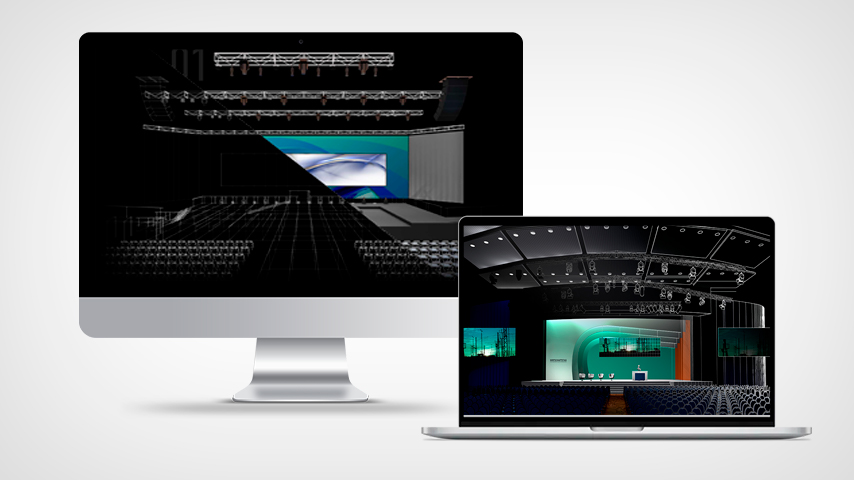
Best websites and software to create a stage plot
When organizing a live event, clarity in the stage layout is critical. Below, we will detail some of the best websites and software for creating stage plots, evaluating their ease of use, cost and need for registration.
Ease of use: It is an intuitive and user-friendly website, designed specifically for musicians and technicians with no previous experience in graphic design.
Cost: Offers a free basic version with limited options and a paid version with advanced features, ideal for more complex needs.
Registration: Registration is required to access the design tools and save projects.
Ease of use: It is a website that focuses on simplicity, allowing users to create technical documents, including stage plots, quickly and efficiently.
Cost: Can be used free of charge for basic functionality, but also offers subscription plans for access to advanced features.
Registration: Registration is required to create and manage stage plots.
Ease of use: It is an ideal website for symphony orchestras. It stands out for its user-friendly interface and the possibility of dragging and dropping elements, which facilitates the creation of stage plots without the need for previous experience.
Cost: Offers a free usage model with limited options and paid plans for access to a wider range of tools and resources.
Registration: Registration is required to use its tools and customize projects.
Ensure the success of your event with the best professional sound company. Contract our services today!
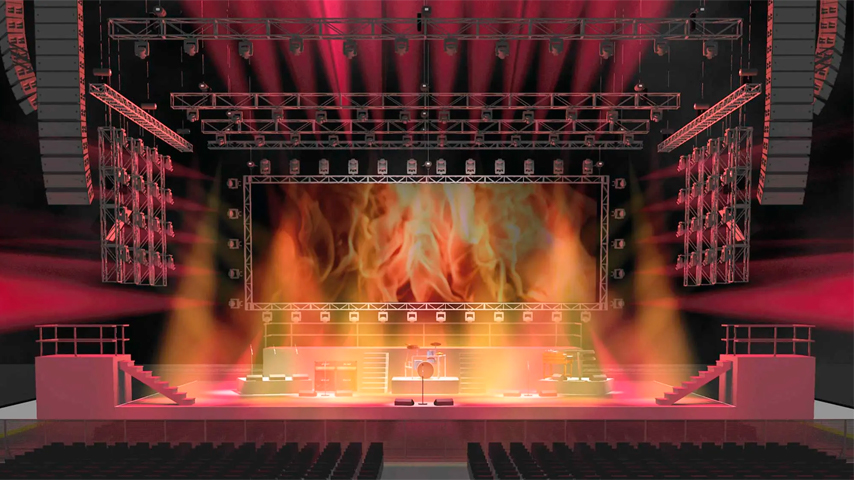
Ease of use: Although it is a professional tool with a steeper learning curve, it offers extremely detailed and accurate design capabilities.
Cost: This is a paid software with annual licenses, which can represent a significant investment for individual users or small productions.
Registration: Requires registration and license purchase for use.
Ease of use: This tool is oriented to lighting and scenography design professionals, offering a detailed simulation and 3D visualization of stage plots.
Cost: It is a high-end software with a corresponding cost, offering both one-time licenses and annual subscriptions.
Registration: Requires registration and purchase of a license to access its full capabilities.
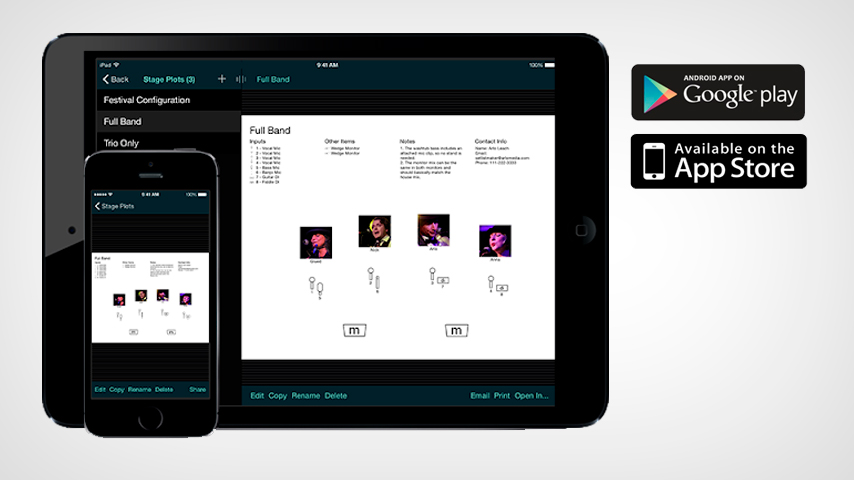
Best applications to create a stage plot
Exploring the best applications for creating a stage plot leads us to a variety of tools designed to meet the needs of musicians, sound technicians and event producers.
Ease of use: It is an application known for its intuitive interface, designed to help users map complex audio configurations in a simple way. It is ideal for both beginners and professionals looking to optimize the design process of their sound systems.
Cost: The application may offer a free basic version with limited functionality, while more advanced versions, with additional features, may be available on a pay-as-you-go or subscription basis.
Registration: Registration may be required to access some advanced features, save and share audio system designs.
Ease of use: This application stands out for allowing users to create detailed stage plots with ease. Its drag-and-drop functionality makes designing the stage layout a simple and straightforward process.
Cost: May offer free options for basic functions and, for access to more advanced tools, may require an in-app purchase or subscription.
Registration: To save projects and access premium features, users may need to register within the application.
Ease of use: This application is valued for its simplicity and effectiveness, allowing users to design stage plots without the need for prior knowledge of graphic design.
Cost: You could offer a cost structure that includes a basic free version, along with pay-as-you-go options or subscriptions for additional features.
Registration: Registration may be required to take full advantage of the application’s capabilities, including customization and cloud storage of designs.
Trust the leading company in professional sound to make your event a success. Contact us today!
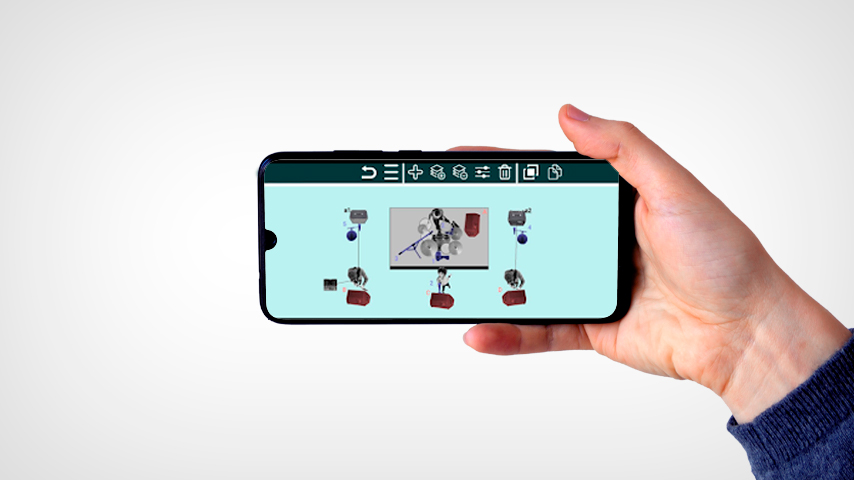
Ease of use: Specially designed for technicians and roadies, this application facilitates the creation of detailed scenario plans. Its interface is designed to be accessible to users with varying levels of experience.
Cost: You can offer a free version with basic functionality and subscription options or one-time payments for access to more sophisticated tools.
Registration: Users may need to register to customize and save their projects, as well as to share them with other team members.
Ease of use: This application goes beyond being simply a tool for creating stage plots; it is a comprehensive band management solution that includes functionalities for organizing repertoires, calendars and finances. Although it offers a wide range of features, its design is intuitive and easy to navigate.
Cost: The application could have a free trial version and then require a monthly or annual subscription to access all its features.
Registration: Given its focus on band collaboration and management, BandHelper will most likely require registration to use the application, allowing users to manage their data and share information with band members.
Each of these applications aims to simplify the creation and management of stage plots, offering from basic solutions to complete management suites for bands and live events. The choice depends on the specific needs of the user, the level of detail required in the stage plot and the available budget.

Questions related to the stage plot:
The stage plot is a crucial element in live event planning, but there are other equally important aspects to consider. Here, we delve into some frequently asked questions related to stage plotting and organizing live events.
1. How do I become a technical rider?
As you should know, a technical rider is the document where all the technical and logistical needs for an artist or band to perform live are listed. Within the technical rider you will find the stage plot, as well as the input list.
To make a proper technical rider you must first evaluate all the needs of the artist or the band, from instruments and sound and lighting equipment rentalto the logistics of transportation, food and security needed for the performance.
It is then essential to transcribe all thisdetailed information into an editable document, such as Word or Excel, making sure to title each page with the name of the band and also include that name in the file title. Finally, this document must be converted to PDF format and sent to the production company in charge of the event.
2. What is a lighting rider?
The lighting rider is a section of the technical rider or a separate document that specifies in detail all lighting requirements for an event. This includes the type and quantity of spotlights, moving light configurations, desired lighting effects, colors, and any other elements that contribute to the visual atmosphere of the show.
The objective is to ensure that the artistic vision of the show can be realized through the lighting available or provided by the venue.
Rent high quality professional sound equipment for your event. Request information and prices now!
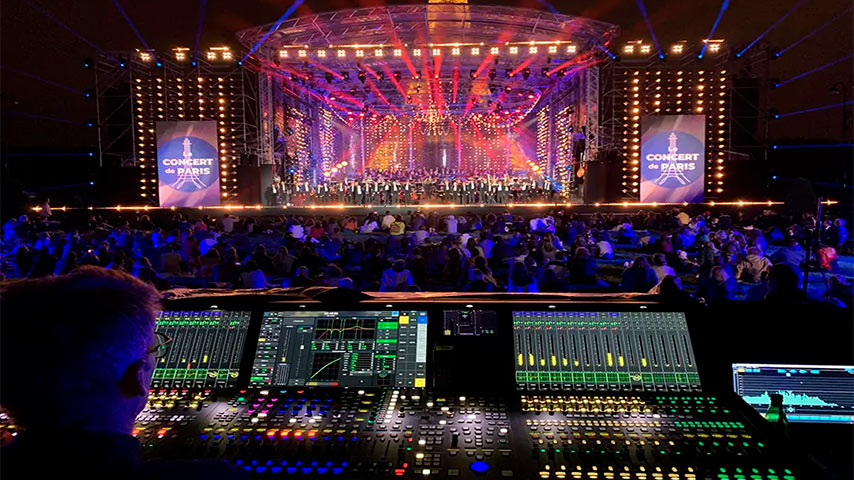
3. What is FOH in a concert?
FOH stands for “Front of House” and refers to the area of the venue used to control sound and lighting during a concert. From here, sound engineers and lighting technicians operate mixers, consoles and other equipment to adjust live audio and visual effects.
The FOH is a critical component in the production of live events, as key decisions are made at this point that directly affect the audience experience.
4. What are the people who set up the stages called?
The individuals in charge of setting up and taking down the stages are commonly referred to as “roadies” or “stage technicians”. They take care of the physical logistics of the stage, including assembling platforms, setting up sound and lighting equipment, and ensuring that all elements of the stage plot are implemented correctly.
These professionals are essential to the success of any live event. They are essential toensure that the show runs smoothly from a technical point of view.
5. Where to download stage plot templates and examples?
There are several online sources where you can download examples of stage plots, however, it is best to create your own customized stage plot template with one of the platforms or applications listed above. This will give it originality and personalization in line with your artistic brand.

Importance of the stage plot for events
In conclusion, the stage plot is an indispensable tool in the planning and execution of live events achieving great benefits such as:
- Effective communication: Ensures that all technical teams understand the needs of the event.
- Efficient setup: Minimizes the time and effort required to set up the stage.
- Error prevention: Reduces the chances of technical problems during the show.
- Event customization: Allows to adjust the stage design to the specific needs of the artist or presentation.
If you enjoyed this content, we encourage you to explore our fascinating articles on event sound, the key to effective organization and the use of high quality equipment. Remember, this information is provided by Edgar Vásquez Audiovisual Services in Barcelona.
Enjoy unparalleled professional sound quality at your event. Hire our services and stand out!
RELATED ITEMS
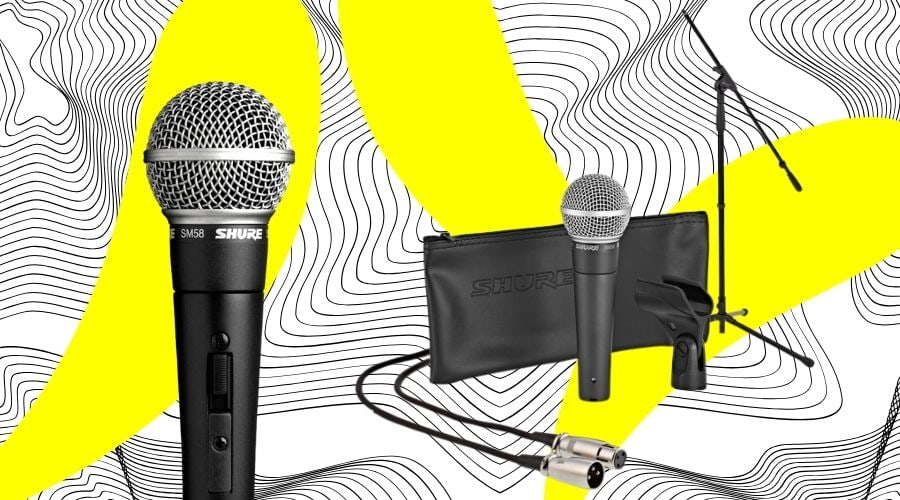
How to rent handheld microphones for your events?
Discover the advantages of renting handheld microphones for your events.
How to achieve guaranteed quality, flexibility and technical support.

5 Key aspects of digital sound mixer rental
Guarantee the success of your event with the rental of digital sound tables.
Complete solutions and professional assistance.
Contact us!
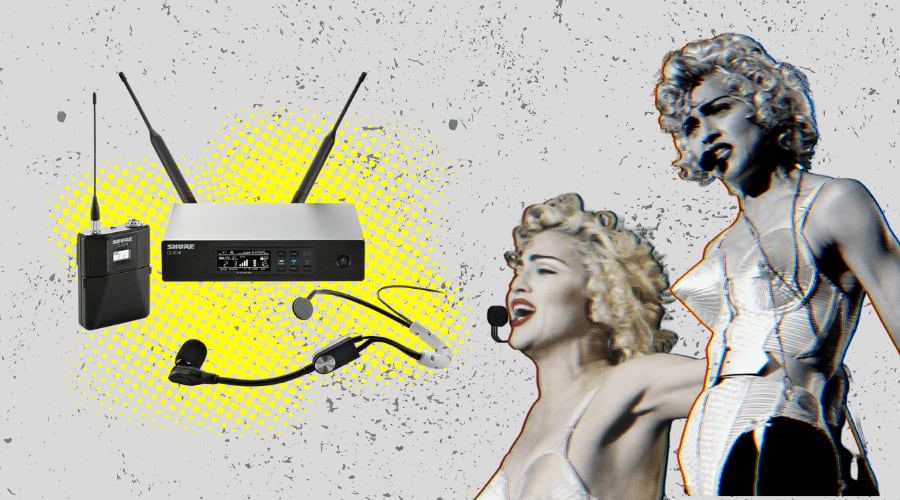
How to rent headset microphones for events?
Learn how to rent headset microphones like an event expert: reduce costs, access advanced technology and technical support.
Make this publication reach more people
Newsletter
¡Suscríbete ahora y mantente al día con nuestras últimas noticias y ofertas exclusivas en nuestro boletín informativo!
FEATURED ARTICLES
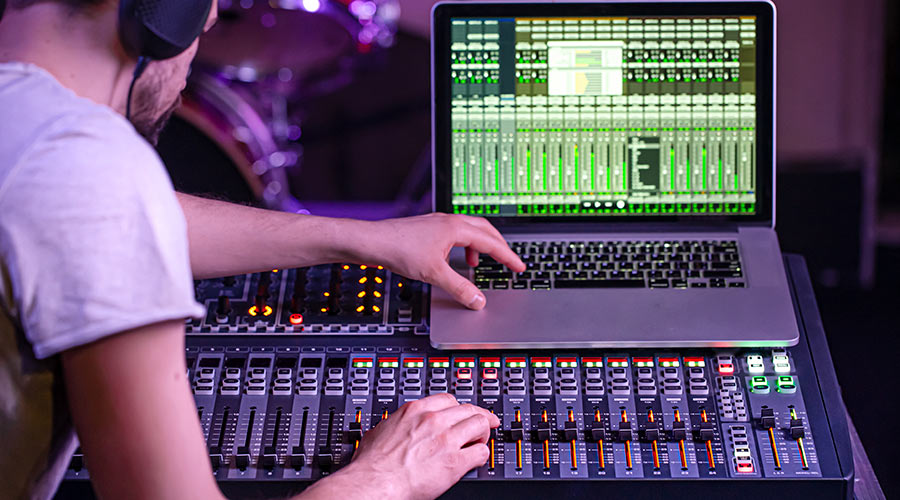
What job does a sound technician do and how much does he/she earn?
Discover how to become a sound technician and the job opportunities in the event, radio, TV and film sound industry.
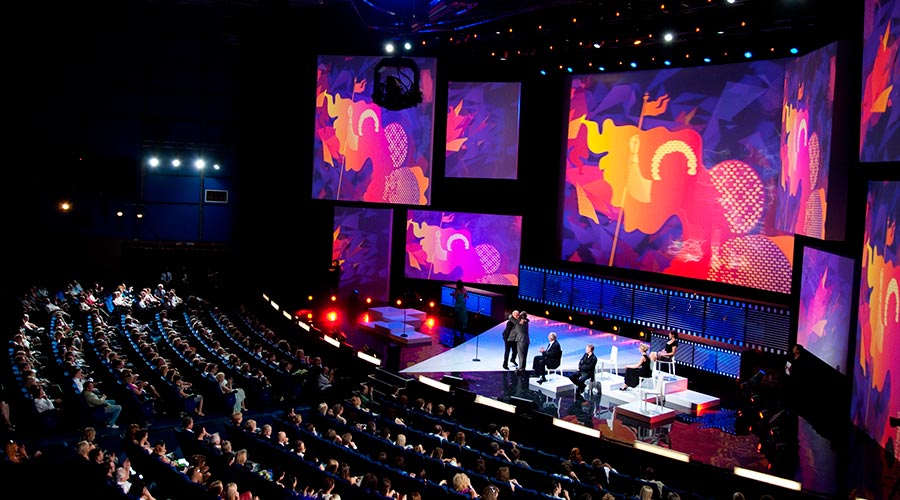
What is a Giant LED Screen and how does it work?
Discover what an LED Screen is and how they work for events and advertising. Explore its unique and brilliant visual impact!

Organizing corporate events: Everything you need to know
Discover what corporate events are, their strategic value, types and examples. Learn how to organize them in exceptional spaces in Spain.
